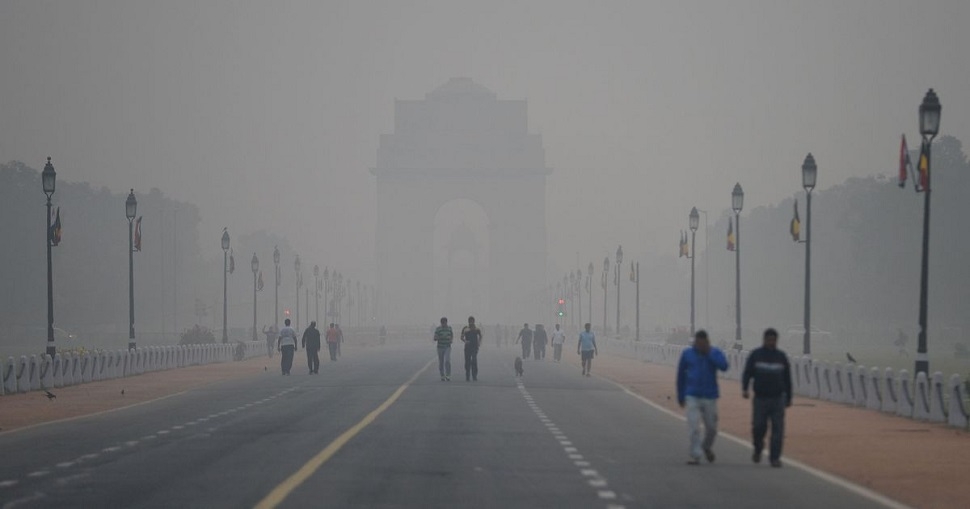Public Health Epidemic
| Date :07-Apr-2019 |


“Living in districts with air pollution from intense crop residue burning (CRB) is a leading risk factor for acute respiratory infection (ARI), especially among children less than five years.”
“The study for the first time estimated the health and economic costs of CRB in northern India pegging it at $30 billion or nearly Rs 2 lakh crore annually for just the three north Indian states of Punjab, Haryana and Delhi.”
AIR pollution due to crop residue burning in northern India is a leading risk factor of acute respiratory infections and causes an estimated economic loss of USD 30 billion annually, according to a recent study by researchers from the US-based International Food Policy Research Institute (IFPRI) and partner institutes. The research found that living in districts with air pollution from intense crop residue burning (CRB) is a leading risk factor for acute respiratory infection (ARI), especially among children less than five years. The study for the first time estimated the health and economic costs of CRB in northern India pegging it at $30 billion or nearly Rs 2 lakh crore annually for just the three north Indian States of Punjab, Haryana and Delhi. “Poor air quality is a recognised global public health epidemic, with levels of airborne particulate matter in Delhi spiking to 20 times the World Health Organisation’s safety threshold during certain days,” said Samuel Scott, IFPRI Research Fellow and co-author of the study. “Among other factors, smoke from the burning of agricultural crop residue by farmers in Haryana and Punjab especially contributes to Delhi’s poor air, increasing the risk of ARI three-fold for those living in districts with intense crop burning,” Scott said in a statement. To be published in the upcoming edition of the International Journal of Epidemiology, the study analysed health data from more than 250,000 individuals of all ages residing in rural and urban areas in India.
It used NASA satellite data on fire activity to estimate the health impact of living in areas with intense crop burning by comparing them with areas not affected by CRB. The researchers observed that as crop burning increased in the northern Indian state of Haryana, respiratory health worsened. Health was measured by the frequency of reported hospital visits for ARI symptoms.
They also examined other factors that could contribute to poor respiratory health such as firecracker burning during Diwali (it usually coincides with the time of CRB) and motor vehicle density. Economic losses owing to exposure to air pollution from firecracker burning are estimated to be around USD 7 billion or nearly Rs 50,000 crore a year, researchers said. In five years, the economic loss due to the burning of crop residue and firecrackers is estimated to be USD 190 billion, or nearly 1.7 per cent of India’s GDP, they said.
It doesn’t however come as a surprise, because though we might not be knowing the exact losses, it is generally known that stubble burning is a major concern for the last few years, especially given the deteriorating air quality in the NCR region that has been directly attributed to this unscientific practice in the northern parts. Despite repeated pleas and warnings to the farmers of Haryana and Punjab, the practice is not being able to be brought in check. The problem is farmers still prefer burning because of lack of awareness and cost issues. Total crackdown isn’t possible either, because farmer lobbies are very powerful and the repercussions would be strong. The practice of highly mechanised farming in Punjab is also a major reason for the residual refuge of large quantities in the fields, the easiest way to dispose of which is to burn them. Environmental concerns are not on top of anybody’s mind. The Government’s awareness moves have been weak and it has not been able to bring farmers on one platform of consonance. Neither the Government has any policy to handle the agriculture waste that is burnt. The scientific disposal of the crop residue is not only expensive but also logistically difficult due to lack of the right infrastructure in place.
It has to be a collective effort wherein the Government needs to work closely with farmers’ bodies, taking them into confidence and making them understand the economic and environmental problems people across north India face due to their wrong approach. There is a certain lack of dialogue and proper communication between the two and lack of concerted Government effort to take on the problem with the purpose of rooting it out. Burning residue in the open had never been considered an environmental threat until very recently. It is only now that people are slowly waking up to it as they are bearing the brunt. By the way, even today, municipal workers burn garbage, dry leaves etc in the open in the urban space despite the action being deemed illegal. The smoke is dangerous and pollutes the urban ecosystem though there is hardly any check on this common practice. The large scale burning in Punjab and Haryana is only a reflection of this casual mindset along with collusions and unholy nexuses between different interest groups.